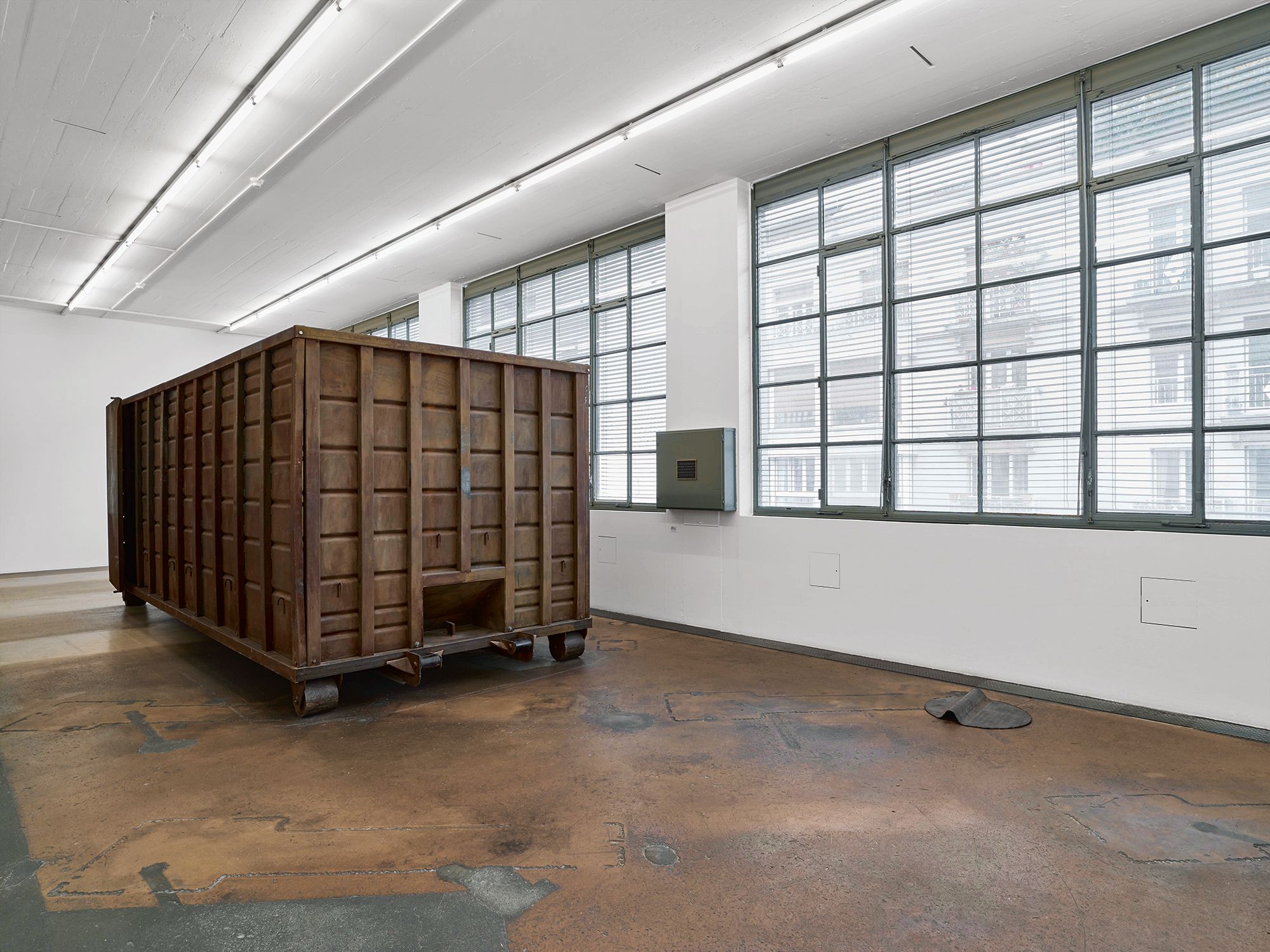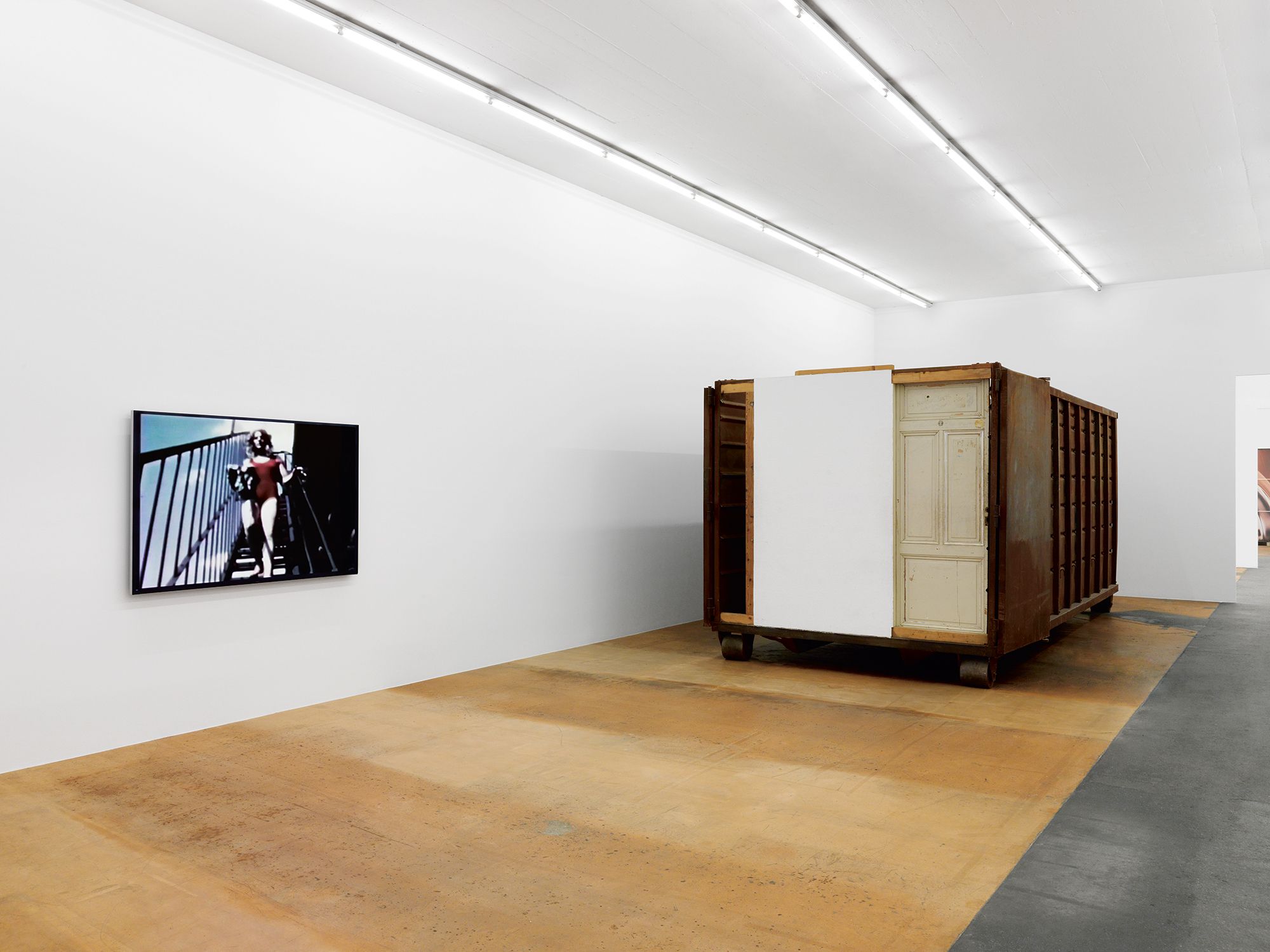Although he died prematurely at the age of thirty-five, Gordon Matta-Clark (1943–1978) left behind a visionary body of work, an active dialogue developed by and in opposition to architecture. In May 1972 Matta-Clark created Open House, an ephemeral piece made on a street in SoHo, New York City. This work demonstrated the artist’s continued explorations of waste recycling. He divided a dumpster into compartments using wooden dividers and doors taken from nearby demolition sites. Open House also takes its name from the opening in the side of the dumpster and the lack of a roof, which produced osmosis and permeability between the created space and the street. As soon as it was installed, Open House became an experimental and recreational activity center that attracted dancers, performers, and artists. Richard Nonas was responsible for replicating it at MAMCO with the help of specifications from the Gordon Matta-Clark Estate, which established the conditions and methods for presenting the work after the artist’s death.
MAMCO WOULD LIKE TO THANK OUR MULTI-YEAR PARTNERS

